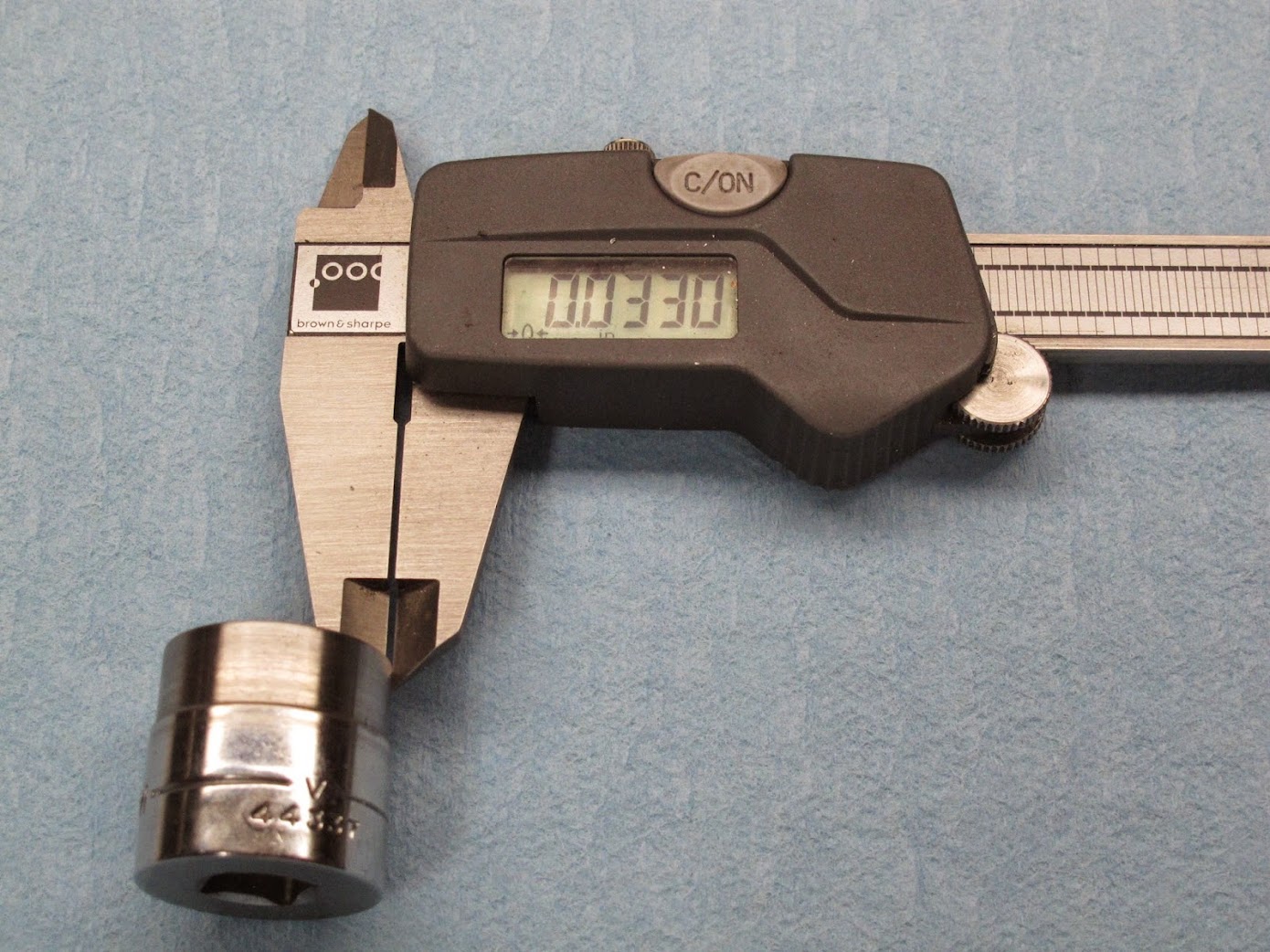Rupunzell
Bernice Loui
Extra thin wall socket is not a limitation.
This is a absolutely nothing special 3/8" drive 3/4" Sears Craftsman socket that was modified on a lathe with a min wall thickness of 0.033" and it has installed and removed (with red loctite, heated to break the bond, about 100 ft/lb) these ARP flywheel cap screws many times with zero problems.

Here is a Snap-On SESU spline drive flex socket designed for high torque, high strength spline head bolts used in the aerospace industry. This one is about 9/16" hex, used on bolts with a psi rating of 220,000 psi and higher. This means applying 100 ft/lbs or more. These sockets have a wall thickness of 0.048" which is not much more than the modified Craftsman socket.

Here are the two sockets side by side with the modified Craftsman socket raised up to achieve proper focus for this image.

There are nuts widely used in the aerospace industry with extremely thin wall thickness. They work fine with absolute reliability when applied within their specifications.
Given the history of flywheel bolt failures on this Fiat engine, applying as much assurance to make absolute sure there will NOT be problems is prudent and wise. If special tooling is required, make it so as the result is more important than the tooling alone. The wider screw head does a better job of supporting the flywheel and distribution of compression force generated by the screw on the flywheel. It is simply a higher strength screw head due to it's size, related dimensions, materials involve, construction and design.
Judgement on appearance alone is not enough, it is the actual engineering and science behind the device that matters.
Bernice
This is a absolutely nothing special 3/8" drive 3/4" Sears Craftsman socket that was modified on a lathe with a min wall thickness of 0.033" and it has installed and removed (with red loctite, heated to break the bond, about 100 ft/lb) these ARP flywheel cap screws many times with zero problems.
Here is a Snap-On SESU spline drive flex socket designed for high torque, high strength spline head bolts used in the aerospace industry. This one is about 9/16" hex, used on bolts with a psi rating of 220,000 psi and higher. This means applying 100 ft/lbs or more. These sockets have a wall thickness of 0.048" which is not much more than the modified Craftsman socket.
Here are the two sockets side by side with the modified Craftsman socket raised up to achieve proper focus for this image.
There are nuts widely used in the aerospace industry with extremely thin wall thickness. They work fine with absolute reliability when applied within their specifications.
Given the history of flywheel bolt failures on this Fiat engine, applying as much assurance to make absolute sure there will NOT be problems is prudent and wise. If special tooling is required, make it so as the result is more important than the tooling alone. The wider screw head does a better job of supporting the flywheel and distribution of compression force generated by the screw on the flywheel. It is simply a higher strength screw head due to it's size, related dimensions, materials involve, construction and design.
Judgement on appearance alone is not enough, it is the actual engineering and science behind the device that matters.
Bernice
I didn't use the ARP flywheel bolts when I saw that they wouldn't fit without what appeared to be a severely compromised socket. Pity that ARP doesn't have an alternative with a more reasonable head size. I just used stock hardware.












